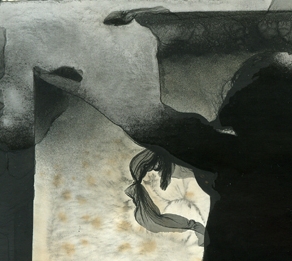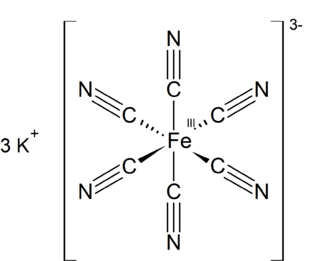
Photography is the art, application and practice of creating durable images by recording light or other electromagnetic radiation, either electronically by means of an image sensor, or chemically by means of a light-sensitive material such as photographic film. It is employed in many fields of science, manufacturing, and business, as well as its more direct uses for art, film and video production, recreational purposes, hobby, and mass communication.

A photograph is an image created by light falling on a photosensitive surface, usually photographic film or an electronic image sensor, such as a CCD or a CMOS chip. Most photographs are created using a camera, which uses a lens to focus the scene's visible wavelengths of light into a reproduction of what the human eye would see. The process and practice of creating such images is called photography. The word photograph was coined in 1839 by Sir John Herschel and is based on the Greek φῶς (phos), meaning "light," and γραφή (graphê), meaning "drawing, writing," together meaning "drawing with light."
Photographic processing or development is the chemical means by which photographic film or paper is treated after photographic exposure to produce a negative or positive image. Photographic processing transforms the latent image into a visible image, makes this permanent and renders it insensitive to light.

Photographic paper is a paper coated with a light-sensitive chemical formula, used for making photographic prints. When photographic paper is exposed to light, it captures a latent image that is then developed to form a visible image; with most papers the image density from exposure can be sufficient to not require further development, aside from fixing and clearing, though latent exposure is also usually present. The light-sensitive layer of the paper is called the emulsion. The most common chemistry was based on silver salts but other alternatives have also been used.

Cyanotype is a photographic printing process that produces a cyan-blue print. Engineers used the process well into the 20th century as a simple and low-cost process to produce copies of drawings, referred to as blueprints. The process uses two chemicals: ferric ammonium citrate and potassium ferricyanide.

The albumen print, also called albumen silver print, was published in January 1847 by Louis Désiré Blanquart-Evrard, and was the first commercially exploitable method of producing a photographic print on a paper base from a negative. It used the albumen found in egg whites to bind the photographic chemicals to the paper and became the dominant form of photographic positives from 1855 to the start of the 20th century, with a peak in the 1860-90 period. During the mid-19th century, the carte de visite became one of the more popular uses of the albumen method. In the 19th century, E. & H. T. Anthony & Company were the largest makers and distributors of the Albumen photographic prints and paper in the United States.

A darkroom is a workshop used by photographers working with photographic film to make prints and carry out other associated tasks. It is a room that can be made completely dark to allow the processing of the light-sensitive photographic materials, including film and photographic paper. Various equipment is used in the darkroom, including an enlarger, baths containing chemicals, and running water.
The gelatin silver process is the photographic process used with currently available black-and-white films and printing papers. A suspension of silver salts in gelatin is coated onto a support such as glass, flexible plastic or film, baryta paper, or resin-coated paper. These light-sensitive materials are stable under normal keeping conditions and are able to be exposed and processed even many years after their manufacture. This is in contrast to the collodion wet-plate process dominant from the 1850s–1880s, which had to be exposed and developed immediately after coating.
Cropping is the removal of unwanted outer areas from a photographic or illustrated image. The process usually consists of the removal of some of the peripheral areas of an image to remove extraneous trash from the picture, to improve its framing, to change the aspect ratio, or to accentuate or isolate the subject matter from its background. Depending on the application, this can be performed on a physical photograph, artwork, or film footage, or it can be achieved digitally by using image editing software. The process of cropping is common to the photographic, film processing, broadcasting, graphic design, and printing businesses.

The term alternative process refers to any non-traditional or non-commercial photographic printing process. Currently the standard analog photographic printing process is the gelatin silver process, and standard digital processes include the pigment print, and digital laser exposures on traditional color photographic paper.

The history of photography began in remote antiquity with the discovery of two critical principles: camera obscura image projection and the observation that some substances are visibly altered by exposure to light. Apart from a possibly photographic but unrecognized process used on the Turin Shroud there are no artifacts or descriptions that indicate any attempt to capture images with light sensitive materials prior to the 18th century. Around 1717 Johann Heinrich Schulze captured cut-out letters on a bottle of a light-sensitive slurry, but he apparently never thought of making the results durable. Around 1800 Thomas Wedgwood made the first reliably documented, although unsuccessful attempt at capturing camera images in permanent form. His experiments did produce detailed photograms, but Wedgwood and his associate Humphry Davy found no way to fix these images.
The paper negative process consists of using a negative printed on paper to create the final print of a photograph, as opposed to using a modern negative on a film base of cellulose acetate. The plastic acetate negative enables the printing of a very sharp image intended to be as close a representation of the actual subject as is possible. By using a negative based on paper instead, there is the possibility of creating a more ethereal image, simply by using a paper with a very visible grain, or by drawing on the paper or distressing it in some way.
Chrysotype is a photographic process invented by John Herschel in 1842. Named from the Greek for "gold", it uses colloidal gold to record images on paper.
A chromogenic print, also known as a silver halide print, or a dye coupler print, is a photographic print made from a color negative, transparency, or digital image, and developed using a chromogenic process. They are composed of three layers of gelatin, each containing an emulsion of silver halide, which is used as a light-sensitive material, and a different dye coupler of subtractive color which together, when developed, form a full-color image.

Analog photography is photography that uses a progressively changing recording medium, which may be either chemical process based or electronic. Lomography defines analog photography as 'photography using an analog camera and film'. For more than a hundred years, this was the only kind. Analog photography has come to mean anything that is "not digital" despite some of controversy over the question of whether the use of film is a true analog process.

Photographic film is a strip or sheet of transparent plastic film base coated on one side with a gelatin emulsion containing microscopically small light-sensitive silver halide crystals. The sizes and other characteristics of the crystals determine the sensitivity, contrast and resolution of the film.
Catherine Jansen has been inventing, exploring and creating photographic processes that merge state of the art technology with traditional photography since the late 1960s.

Mordançage is an alternative photographic process that alters silver gelatin prints to give them a degraded effect. The mordançage solution works in two ways: it chemically bleaches the print so that it can be redeveloped, and it lifts the black areas of the emulsion away from the paper giving the appearance of veils. Once the emulsion is lifted, it can then be removed or manipulated depending on the desired outcome. Areas where the emulsion was removed appear to be in relief. These prints can become oxidized during their creation, further altering the tonality of the image.
Brady Wilks is an American photographer, known for his alternative process landscapes. He works in historical and alternative photographic processes including acrylic gel lift / transfers and wet plate collodion process negatives, ambrotypes, and ferrotype.
Betty Hahn is an American photographer known for working in alternative photographic processes. She completed both her BFA (1963) and MFA (1966) at Indiana University. Initially, Hahn worked in other two-dimensional art mediums before focusing on photography in graduate school. She is well-recognized due to her experimentation with experimental photographic methods which incorporate different forms of media. By transcending traditional concepts of photography, Hahn challenges the viewer not only to assess the content of the image, but also to contemplate the photographic object itself.












